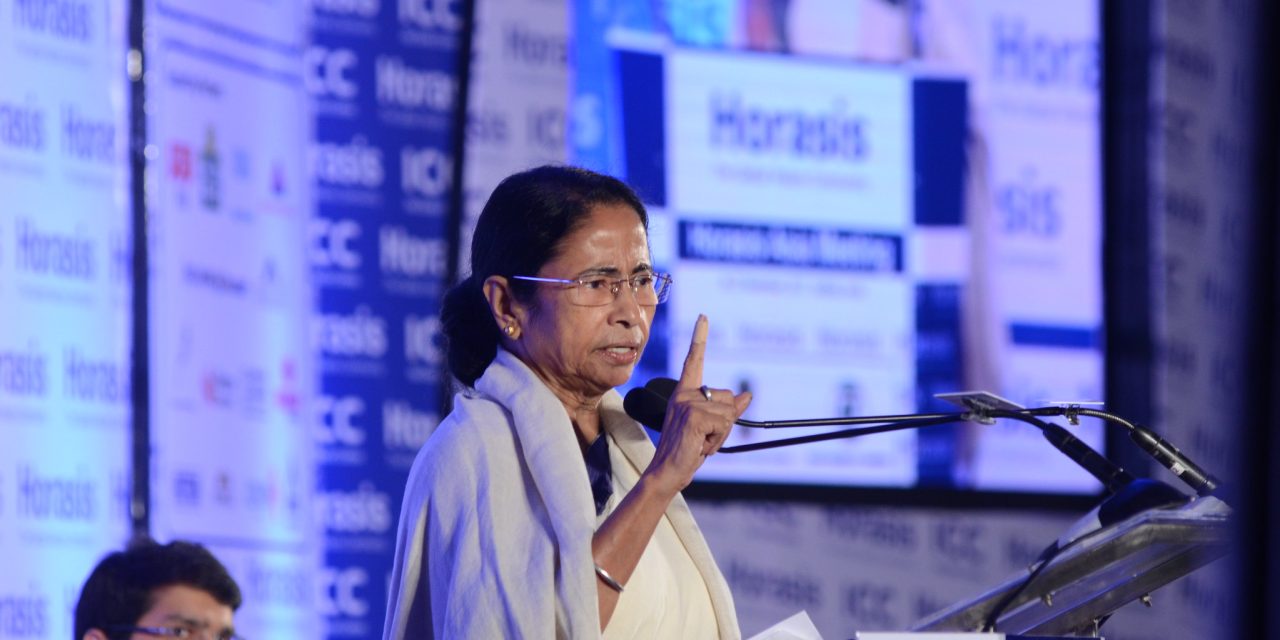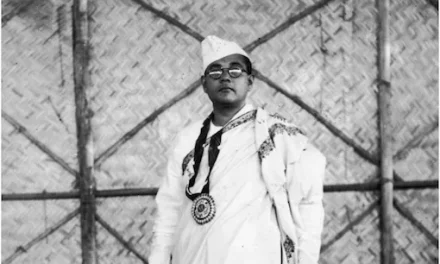The tragedy in West Bengal today is that the claims of the government and the reality on the ground are often miles apart. This is especially true when it comes to employment in the state. Mamata Banerjee and the TMC came to power on a strong anti-incumbency wave against the communists and her promises of changing the state, bringing in infrastructure, jobs and opportunities. Almost a decade after she came to power, while Didi lauds Bengal’s unemployment rate for being lower than the national average and attributes it to her government’s economic strategies, we hear stories such as the heartwrenching one wherein a daily labourer and his wife sold their two-and-a-half month daughter for Rs. 3000 to face the financial burdens they faced with joblessness and laborers from the state have to risk their lives and work in far-flung states and union territories like Jammu and Kashmir to earn a living.
Why is there a gap between what is projected by Didi and what is the reality on the ground?
As per the Ministry of Statistics and Programme Implementation (MOSPI), West Bengal is India’s sixth largest state in terms of economic size. As per the data compiled using information from Directorate of Economics & Statistics of the State Governments as reported to MOSPI, West Bengal had a Gross State Domestic Product (GSDP) of Rs. 11.78 trillion in 2018-2019 as on 15 March 2020. The West Bengal Industrial Development Corporation (WBIDC) has been developing WBIDC Parks (with such Parks existing in Raghunathpur – Purulia, Vidyasagar Industrial Park – Kharagpur, Poly Park and Food Park – Sankrail, Kandua, Paridhan Garments Park and Shilpangan Light Engineering Park in Kolkata, Manikanchan Gems and Jewellery Park in Kolkata, Naihati, Kalyani, Haldia Industrial Park, Barjora and Durgapur) and WBIDC Industrial Growth Centres (in Dabgram, Raninagar, Chakchaka, Bhabuk, Bolpur, Haringhata, Bishnupur, Uluberia, Falta, Haldia Growth Centre and Kharagpur Growth Centre) to encourage medium and large-scale industries. The primary functional SEZs in the state are Unitech Hi-tech Structures Ltd. Rajarhat in Kolkata – IT/ITES, DLF IT SEZ Rajarhat in Kolkata – IT/ITES, Bengal Gem And Jewellery Park (Salt Lake) in Kolkata – Jewellery manufacturing and studies, WIPRO SEZ (Salt Lake Sector V) in Kolkata – IT/ITES, Falta Special Economic Zone in Falta – Multi product, Kolkata IT park in Bantala – IT and TCS Gitanjali Park – IT/ITES.
These facts and figures may present a rosy picture but the reality on the ground is grim, when it comes to industries. Much like in the days of communist rule, when right from alley-way Dadas to local satraps with clout, the presence of muscle power was a major cause of concern for citizens, industries and society, the TMC rule has seen cases like when IFB Agro Industries Ltd, a listed company with national presence and one of India’s biggest distiller and spirit-makers, saw its Noorpur facility in West Bengal’s South 24 Parganas district vandalized (besides its employees being attacked) by a group of 150 ‘armed’ goons, leading to the closure of the facility. The extortion culture that prevailed in the days of the CPI(M) government in West Bengal still continues to this day. When I hear stories about my grandfather – Dhirendranath Guha Majumdar, who was a pioneer in the Durgapur Steel Plant Project as well as various other engineering projects in the early days of independent India, I wonder – where has that Bengal gone? Until a few decades ago, West Bengal had a number of industries, be it textiles, chemicals or engineering parts. Over the 80s and 90s, Naxalism, industrial unrest and the Bandh culture have made major companies such as Shaw Wallace, ICI India, Philips India, Brooke Bond India and JK Tyres leave the state. The scourge of Dadagiri, the extortion culture and violence (West Bengal reported the maximum number of political murders in 2018 as per a report by the National Crime Records Bureau) has dissuaded prospective investors to steer clear from a state where the law and order situation has been dismal. In such a scenario, it is the informal sector as well as Micro, Small and Medium Enterprises (MSMEs) that have to accommodate a major section of the unemployed masses in the state, albeit at low wages and with job insecurity.
Not only have the efforts of the West Bengal government not matched the need for more investment into MSMEs, but Mamata Banerjee went on to criticize the central government’s Emergency Credit Line Guarantee Scheme (ECLGS) for MSMEs recently! In 2016, the state government had launched Startup Bengal to encourage the establishment of MSMEs. However, between 1st January 2016 and 30th April 2018, the state government had provided financial incentives to only 15 start-ups. The state government seems to be so aloof of the severity of the problem in various sectors that even during times of crisis, such as during the COVID lockdown, there have been violations of the directive by the Union Ministry of Labour and Employment to companies around wage cuts and job terminations, in banks, jute mills and tea gardens in West Bengal. When Mamata Banerjee talks of unemployment in West Bengal being among the lowest in the country and job employment among the highest, I must highlight that West Bengal has always been on the upper end of the employment spectrum in recent decades. The World Bank highlighted that this has been the case since 2005, well before the CPI(M) was ousted from power. While the state has been doing well in job growth (thanks to manufacturing and construction), the state has only one in five workers in a salaried job. Moreover, the female labour participation in the state is very low.
The government in West Bengal has not only attracted scrutiny from the enforcement directorate lately, but also sounds hypocritical when criticizing the central government for privatization of PSUs while it itself goes about undertaking questionable disinvestment pursuits, such as in the Metro Dairy sale where 4 top IAS officers of the Mamata government were summoned by the ED. Corruption and bribery make matters worse for the government in the state, with about 46% people in West Bengal admitting to have given bribes to get their work done in a nationwide survey last year. Earlier in the year, several TMC Panchayat members and workers were held responsible for misappropriation of cyclone Amphan relief-funds in Nandigram in East Midnapore district. An interesting tid-bit here is that the violence in Nandigram in 2007 was a key development that sounded the death-knell of the CPI(M) government in the state and led to the rise of the TMC. Will this new incident of corruption in Nandigram sound the death-knell for the TMC in the state? This is not the first time when the TMC has found itself under intense scrutiny for allegations of corruption. Previously, Mathew Samuel bravely came out as the whistleblower in the Narada News sting operation, where members of the ruling party in the state were recorded accepting bribes in exchange for favors to a fictitious company. In the Rose Valley Group and Saradha Group Ponzi schemes, around Rs 17,500 crore is estimated to have been duped from investors. In both the cases, the TMC has been accused of inaction. Moreover, the directors of both the money-pooling companies have ties to the Trinamool Congress. The erstwhile CEO of the group’s media wing Mr. Kunal Ghosh was himself a Rajya Sabha TMC Member of Parliament. However, the most serious matter of concern is the fact that Chief Minister Mamata Banerjee herself feigned ignorance about Saradha being a chit fund company even after the then-Union Minister of Company Affairs Sachin Pilot had placed a list of 73 companies from West Bengal who were running Ponzi schemes in the floor of the house in the Lok Sabha, earlier in the year, in March 2013. These Ponzi schemes may however be only the tip of the iceberg. Data collated by the All-India Small Depositors’ Association (AISDA) from agents of 27 money pooling companies has shown that these companies collectively raised close to Rs 40,000 crore in the last four years West Bengal. The depositors in such funds included small-time depositors from rural and semi-urban areas. Apparently, self-help groups (SHGs) formed to secure microcredit from rural banks were also being used to spread such Ponzi schemes among the group members.
This is particularly worrying due to the limited purchasing power of citizens in rural and semi-urban pockets across the state today. As of 2017, West Bengal had 1.5 crore unorganized-sector workers, mainly in areas such as construction. With the housing market in Kolkata on the downslide and new state-based real-estate regulations (the West Bengal government bypassed the central government’s Real Estate (Regulation and Development) Act – RERA with its own Housing Industry Regulation Act – HIRA), the workers employed as daily wage laborers are finding it tough to earn a living. Without trade unions to intercede for such workers, to put pressure on the government to revise wage rates based on Consumer Price Index (CPI) and Wholesale Price Index (WPI) movements, the government does not bother to look more closely at ways to resolve this looming problem, and as a result, thousands employed in the unorganized sector (as well as the organized sector) are at the mercy of the market. There is clearly a communication gap between the state government and various industrial units, as seen all too clearly in the non-payment of wages in the Jute industry. An interesting point here is that one of the most common reasons given by mainstream media for the industrial downslide in West Bengal is labor militancy. This is however no longer true. As per the Statistical Appendix of the Economic Review 2011-12 (Government of West Bengal), while in 1980, the total number of industrial disputes involving strikes was 78, the total number of such disputes decreased to 15 in 2010. However, factors like low labor productivity in West Bengal, with respect to labor productivity in the rest of India, may be greater driving factors on this front. Regardless, the efforts to survive without any meaningful direction to do so has historically resulted in some workers establishing contact with syndicates within cities. These syndicates are usually run by local strongmen who have connections with the ruling party, and keep a check on the supply of government contracts and construction related work. These syndicates today are widespread from real-estate to Durga Pujas, and resort to arm-twisting if a customer does not acquiesce to their demands. Unlike cartels, these syndicates operate brazenly in the open and often with the collusion of the local administration. A recent expose by India Today showed how everyone, from a TMC councillor to the chairman of a Municipality, were embroiled in the tangle of syndicates.
If the scourge of syndicates was not enough, the investment proposals shared by the government that never get fructified make matters worse for a population struggling with unemployment. West Bengal apparently managed to garner investment proposals of Rs 2.84 lakh crore, with proposed plans and projects announced by major corporate such as Reliance, JSW Group, ITC, Flipkart, and Coca Cola, during 2019. Chief Minister Mamata Banerjee has also shared the plans for her ‘Silicon Valley’ in New Town, with companies such as Reliance Jio and TCS already having taken up land in the proposed hub. At the end of each edition of the annual Bengal Global Business Summit (from 2015 to 2018), announcements of the scale of investment proposals and expressions of interest were announced: Rs 2.43 lakh crore in 2015, Rs 2.5 lakh crore in 2016, Rs 2.35 lakh crore in 2017 and 2.19 lakh crore in 2018. But, the latest conclave in December 2019 did not see such an announcement. This is not surprising since between 2015 and 2018 several proposals, investment intentions, expressions of interests and specific announcements have been in the news, with a net amount of Rs 9.47 lakh crore being highlighted, albeit the state government’s response on how much of this amount and investment has actually fructified is not forthcoming. I believe this is because the state does not have much to report, with a dearth of foundating-laying or expansion-cum-diversification events. The last major investment project in the state was of over Rs 16,000 crore in the modernization and expansion of the integrated steel plant of Steel Authority of India Limited (SAIL) in Burnpur, between 2006 and 2015. Some industrial bigwigs highlight how Mamata’s confused approach to land acquisition (understandably so, since here preceding Chief Minister lost his seat primarily due to forced land acquisition in Singur and Nandigram) may be playing a role in dissuading investors from walking the talk. Not only has she horribly failed in bringing new investments and projects, but has also not succeeded in reopening labour-intensive units of Jessop, Hindustan Motors and Dunlop, among others, which have been lying closed for a number of years now.
Not only has the TMC government proven to be inept in doing much on the economic front but they have also horrendously miscalculated on what I see as appeasement-based politics on the ground. Be it her over-the-top reactions on ‘Jai Shri Ram’ chants in May 2019, the rise of radical figures like the ‘Fatwa Man of Bengal’ Noor-ur-Rehman Barkati who famously promised to pay anyone who blackened PM Modi’s face and has graced Trinamool Congress rallies in the past, the state government curtailing the time traditionally permitted for the immersion of Durga idols to allow a break for Eid in 2016 and subsequently restricting idol immersion on Dashami day beyond 6 PM in 2017, militant outfits like Harkat-ul-Jehadi Islami (HUJI) spreading their tentacles deep into the countryside, frivolous tactics like the West Bengal Council of Higher Education (WBCHE) replacing the Bengali word for rainbow – Ramdhenu (Ram’s Bow) with Rongdhenu (bow of colours) and the persecution of patriotic citizens like Padma Shri Kazi Masum Akhtar by fundamentalists in the state when he asked his students to sing the national anthem, all point to a worrying descent of the state into a pit of appeasement-based politics, communalism and intolerance. The extent of appeasement was visible when even an assertive Muslim leader like Asaduddin Owaisi said,` […] she is looking down to Muslims of the state as human indicators of Muslims are very low in the state. Please stop appeasing Muslims for vote’, and when Bengal Governor Jagdeep Dhankhar accused Didi of “explicit appeasement” of minority community.
Mamata Banerjee’s has been a government of contradictions: she speaks of federalism but does not want to share COVID data with the Union government; she speaks of secularism but her pandering to Muslim orthodoxy has even made Muslim women turn away from the TMC; she used to speak against a ‘culture of violence’ propagated by CPI(M) in the state and yet her party is using the exact same tricks of the trade that the communists did before them. The aforementioned occurrences and realities in West Bengal make me feel that Didi may just have lost the plot, when it comes to administering the state. It may be time for Didi and TMC to pass the baton, for meaningful Poriborton (পরিবর্তন) – change, to initiate a new chapter in the journey of my Shonar Bangla (সোনার বাংলা) – my golden Bengal!
Header Image: Richter Frank-Jurgen | CC BY 2.0
















